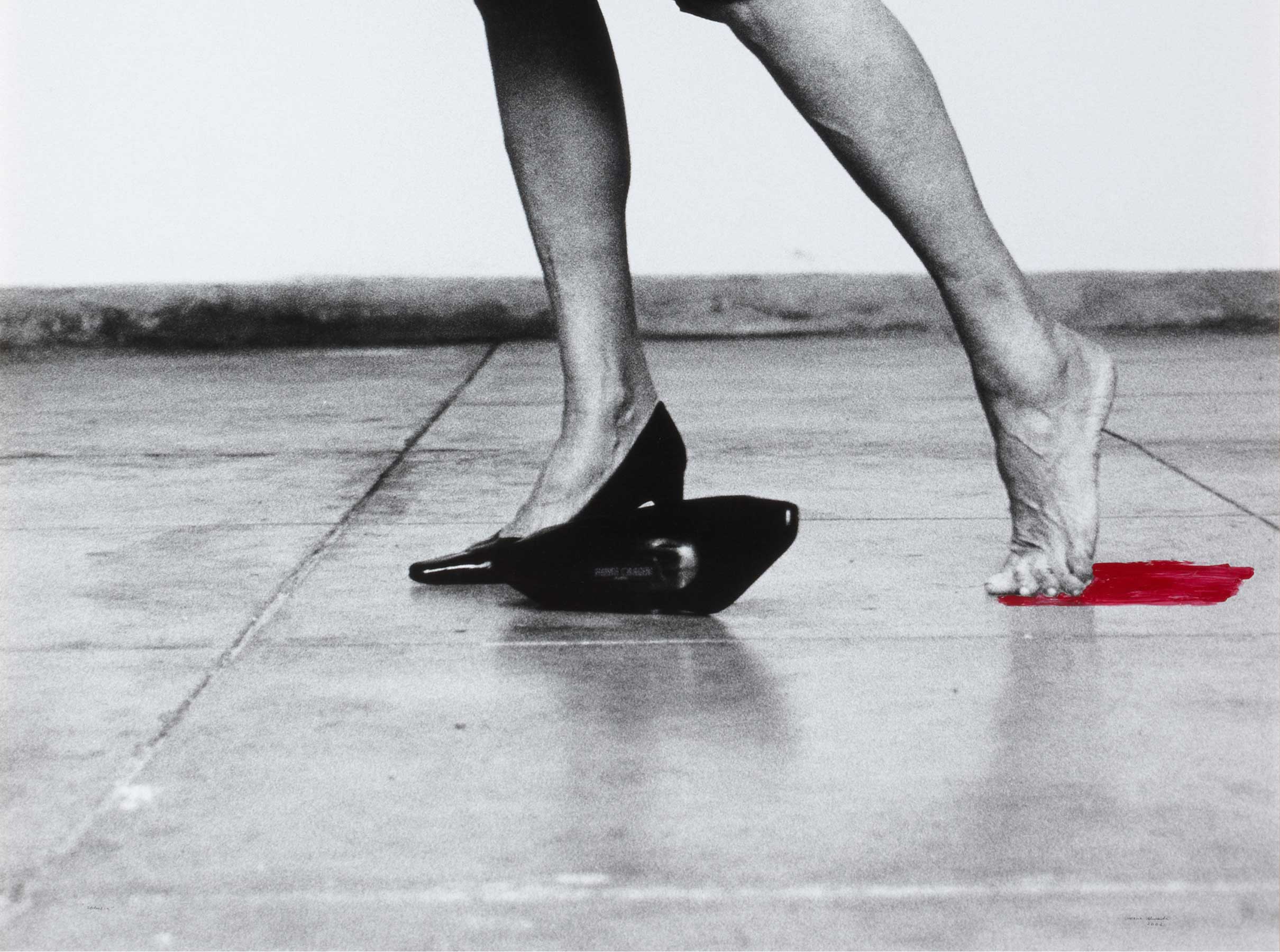Conexión V-Q [V-Q Connection]
- 2003
- Acrylic on canvas (Diptych)
- 180 x 389 cm
- Cat. P_684
- Acquired in 2003
Out of sight, out of mind, they say. In V-Q Connection (2003), Manolo Quejido invoked the work of Diego de Velázquez as both a reminder and an affirmation. He had not forgotten his earlier project on the theme of painting, an attempt to escape from what he called 'mediation', the empire of the image that came to the fore in the 1990s.
V-Q Connection consists of two canvases; one represents Velázquez and the other Quejido himself. The artist uses the same colour code he had employed on many previous occasions to schematise some of the painters from history he most admired. Each canvas projects uniform fields of colour, creating two chambers, bounded by lateral partition walls (tabiques). The effect of these two enclosures is to have each painter (Velázquez and Quejido) occupying a section of the painting pertaining to his own time. In Quejido's code, the colour of the chamber is a general reference to the painting of the period in question, while the partitions identify the specific painter. In the first canvas, for example, the chamber is painted blue, to represent the early Baroque period, while the black partition is a reference to Diego de Velázquez. In the second picture, the black chamber references contemporary painting and the green partition is Manolo Quejido.
The perspectives of the two pictures are not compatible, because they depict different figures (Quejido and Velázquez). However, the canvases are arranged side by side, like a diptych that operates by adjacency. The aim of this process is to connect Quejido to Velázquez, to turn the distance between them into a form of relationship, one that the artist wants to make close and genealogical. Many years before, Quejido addressed this same relationship; 'when I say Quejido I mean Velázquez'.
The terms of this link (V-Q) have always lain in the indistinct practice of painting and thinking. Above all, though, Quejido uses Velázquez as his starting point, studying two facets of space in painting: painting either as a cavity, a place to be occupied, or as a simple surface with no room for the corporeal.
On the one hand, Velázquez's vistas of the gardens at the Villa Medici gave Manolo Quejido a path for his two 'doors' (PF and IP, 1979-1980)*. Together, Quejido's doors and Velázquez's vistas explore the notion of the painting as a wall which — however thin it may be — prevents us from seeing past it. The door that closes, the vista that denies us any further view; painting is a hybrid between a blank wall and a Moebius strip, with no real interior.
And on the other hand, following in the footsteps of Las Meninas, Quejido repeatedly puts to the test the notion of capacity in painting. In series such as Tabiques (Partitions) (1990-1991) he explored the idea of painting as a chamber, discovering that it never fully matches the flat nature of the picture. Like Las Meninas, Quejido's partitions represent the painter's room. Unlike Velázquez's painting, however, they are full of ambiguous volumes. In one of the details, they might even be said to expel all the space that the plane of the painting seeks to accommodate. At the same time, both the Partitions and the Meninas openly parade the various devices used to make art appear natural. Everything is exposed, everything is on show: this is the facet of Velázquez that most interests Quejido, the Velázquez who appears to display natural objectivity and then immediately denies it.
Beyond any purported objectivity and naturality, the fact that V-Q Connection represents the two painters using a set of partitions and chambers is consistent with Quejido's close attention to Velázquez. Similarly, the primacy of the frontalised planes in this V-Q Connection — the large blue plane, the large black plane — is a nod to the respective doors/vistas.
However, the painting is not merely intended to serve as a connection; it also addresses another issue that is very dear to Quejido's heart: these uncluttered chambers hint at what the artist calls the 'giving void', the vacuum that exists before the moment of creation, into which a painting is sometimes born.
Indeed, Manolo Quejido has written that 'PAINT' (his capitals) is a substance that occurs intermittently. It is new and different in every work, as the painter keeps it in a state of constant change. Consequently, Quejido threads into the composition of his V-Q Connection an expression of this change, as formulated in his 1996 series, Umzug: two silhouettes traverse the partitions and chambers of Velázquez and Quejido, in transit between the two.
If we use the code of Umzug to decipher this movement of phantoms, the silhouette running across the right-hand chamber represents a painter, while the one on the left (i.e., where Velázquez should be) is PAINT itself. Indeed, Velázquez's chamber, the one in the same blue colour as the PAINT/silhouette entering it, is transparent to it. Quejido is creating a practical identity between Velázquez and PAINT; And as he has written elsewhere, he is also convinced that Velázquez’s approach to painting was one of least intervention, i.e., he included only the essential and indispensable. In Las Meninas, he could hear Velázquez saying: 'The reality surrounding me in the reflection of the canvas has been painted through me'.
Ultimately, the room that forms the setting for Las Meninas, accommodates everything by painting it. It is precisely there that we see the beginning of 'the painting of a PAINT that paints itself', the next theme to which Manolo Quejido was to turn his attention after his V-Q Connection.
* There is a version of IP in the Banco de España Collection.
Other works by Manolo Quejido

![Conexión V-Q [V-Q Connection]](/f/webca/INF/assets/img/fff.png)